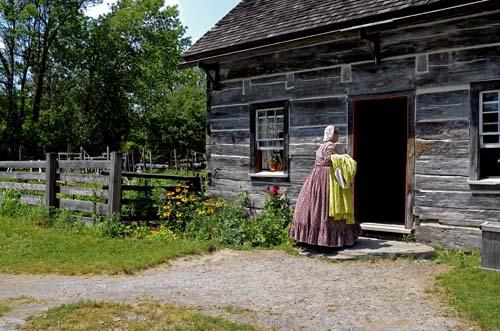More Great Genealogy Brick Wall Solutions
| Tweet |
|
At some point, every genealogist reaches a road block in their ancestral research. The best way to overcome a road block is to try to think creatively and look for less obvious solutions. This collection is all about looking for the less obvious.
Names
1. Scottish Ancestors – For a variety of reasons, immigrants often changed their name when they move to a new country (see Why Immigrants Change Their Name). Often, it is an attempt to disguise their country of origin. For example, ancestors migrating to an English-speaking country would Anglicize their name (i.e. make it sound more English).
What is often not recognized is that someone from an English-speaking country would also sometimes change their name. This was usually done to disguise the region of origin. For example, Scottish immigrants would sometimes drop the ‘Mac’ at the beginning of their family name to hide the fact they were from Scotland.
If you are having trouble tracing an ancestor back to Great Britain, consider the possibility that they may have come from Scotland. Try adding a ‘Mac’ to the front of your family name. For example, for the surname Arthur try looking for records under MacArthur, the name Grey would become MacGrey, etc.
2. Names of Women Remarrying – Most marriage certificates list a woman’s family name before she was married. Do not assume this is your ancestor’s maiden name.
The marriage certificate you are looking at could be a woman's second marriage and she may be listed by the family name of her first husband. This was incredibly common back it the days when people often died young and had to remarry quickly for economic reasons.
Always look for corroborating evidence that you are, in fact, looking at your ancestor’s maiden name. Otherwise, you may end up tracing the family tree of your ancestor's first husband.

3. Maiden Names – Here is another innovative way to trace the maiden name of a woman. If one of your female ancestors ever attended a teacher's college or women’s school then consider contacting the alumni association. Most women would have kept in touch with their alumni association after they graduated and would have informed them of any name change when they married. You can use this information to contact the alumni association and trace backwards to determine a woman’s maiden name.
4. First Names and Social Status - Several academic studies have shown a link between a parent's level of education, their social background (class), their cultural preferences and the first names they give their children. These patterns can help direct you towards certain types of ancestral records. We have written an entire article about this called What First Names Say About Someone.

